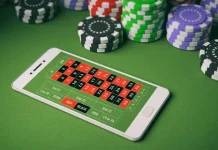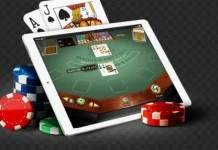In today’s fast-evolving gaming landscape, seamless cross-platform experiences aren’t just a bonus—they’re expected. Mission Uncrossable, a breakout title that fuses crash-style betting with stealth gameplay, has made user experience (UX) across devices one of its core strengths. Whether players are navigating tense stealth lanes on a mobile phone, executing quick cashouts on desktop, or using a tablet for full control of co-op missions, the game delivers a consistently smooth, responsive, and immersive experience Best Casinos To Play mission uncrossable game.
Here’s a look at how Mission Uncrossable maintains its UX excellence across different platforms.
Optimized for All Screens
From the outset, Mission Uncrossable was built with flexibility in mind. The interface adapts automatically to different screen sizes and aspect ratios without sacrificing detail or usability.
- Mobile: The mobile version is touch-optimized, featuring large, easily tappable icons, haptic feedback on key moves (like cloaking or deploying tools), and gesture support for quick camera panning or lane scanning. Controls are condensed for single-handed play but retain all core features.
- Tablet: The tablet experience bridges mobile and desktop. Players benefit from a larger map view, better lane detail, and easier multitasking in squad mode. Gear switching and Crash Mode timing are especially intuitive thanks to drag-and-drop elements and two-handed input.
- Desktop: On PC or laptop, Mission Uncrossable shines with keyboard shortcuts, customizable HUD elements, and responsive mouse targeting. Advanced users can bind hotkeys for crash actions, quick extracts, and gear swaps, making high-stakes play faster and more efficient.
Consistent UI Across Platforms
The user interface follows a unified design philosophy, meaning no matter where you play, core screens feel familiar:
- Mission selection, gear loadout, Crash Mode, and squad interactions are structured similarly on all devices.
- Progress tracking, XP, token counts, and vault access are always visible, with UI scaling dynamically based on screen size.
- Tutorials and pop-ups adapt to the device being used, offering tailored help—for instance, touch-based tips on mobile and shortcut hints on desktop.
This consistency allows players to switch devices during a session without needing to re-learn controls or navigate a different interface.
Cloud-Synced Progression
One of the standout features contributing to fluid UX is the game’s cloud-synced player profile. Whether you start a mission on mobile or finish it on your desktop later, your progress, gear condition, and crash history stay perfectly synced.
- XP, achievements, and mission history are updated in real-time across devices
- Saved loadouts and squad chats are always accessible
- Players can initiate a stealth run on tablet and jump to PC for the Crash Mode phase
This integration is especially valuable for players who switch devices throughout the day—such as playing a few mobile rounds on a commute, then resuming full sessions at home.
Touch and Gesture Integration
On touchscreen devices, Mission Uncrossable isn’t just a port—it’s optimized:
- Swipe to scan guards, pinch to zoom in and out of lanes
- Tap-and-hold to preview Crash Mode thresholds
- Double-tap to quick-deploy gadgets or open bonus vaults
These controls feel natural, making even complex missions manageable on smaller screens without sacrificing tension or timing.
Performance and Load Times
Even on lower-end devices, Mission Uncrossable runs smoothly thanks to scalable graphics settings and intelligent caching. Users report:
- Low crash rates on both Android and iOS
- Minimal load times, even when jumping between mission zones
- Responsive frame rates, especially during Crash Mode animation peaks
The game’s backend systems are also designed to minimize lag during cashouts—essential for timing-sensitive multipliers.
VR Compatibility on the Horizon
Looking ahead, Mission Uncrossable is preparing for full VR support, beginning with PC-compatible headsets. The UX for VR is already being designed with:
- Eye-tracking cashouts
- Motion-based stealth movement
- Haptic integration for gadgets and collisions
Once live, this will bring a whole new level of immersion without disrupting the established UX consistency.
Final Thoughts
Mission Uncrossable doesn’t just work across devices—it thrives. With adaptable controls, synced progression, smart UI design, and high performance on mobile, tablet, and desktop, the game ensures that players stay engaged wherever and however they choose to play. In a genre often limited by single-platform design, this fluid cross-device UX sets Mission Uncrossable apart as a truly modern gaming experience.










